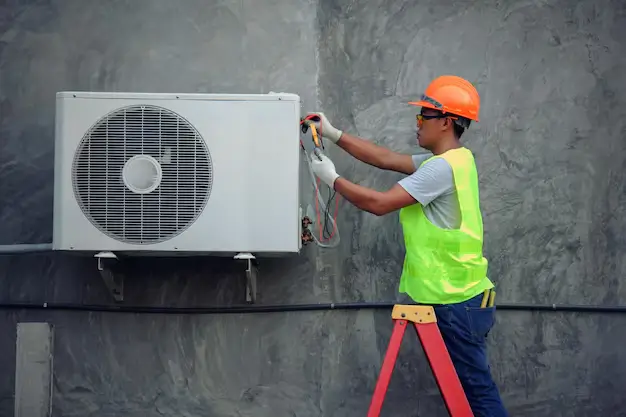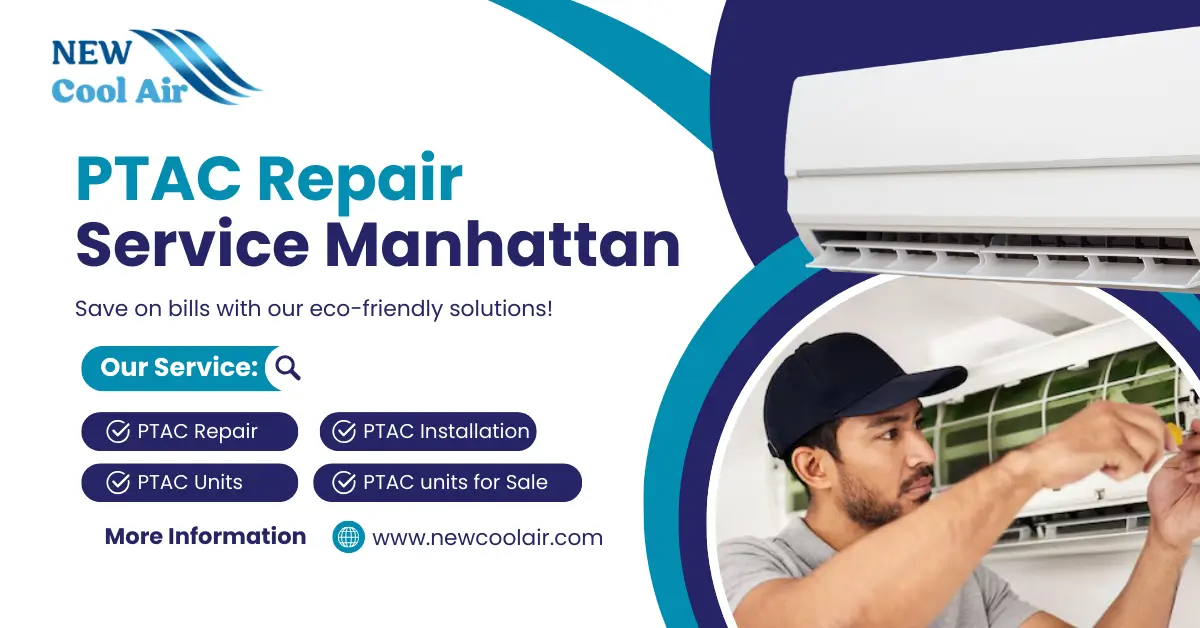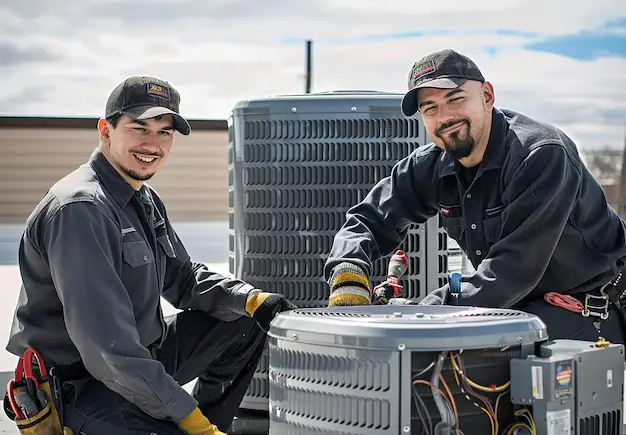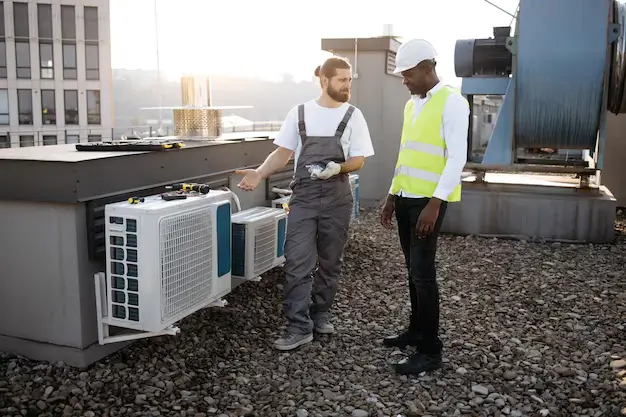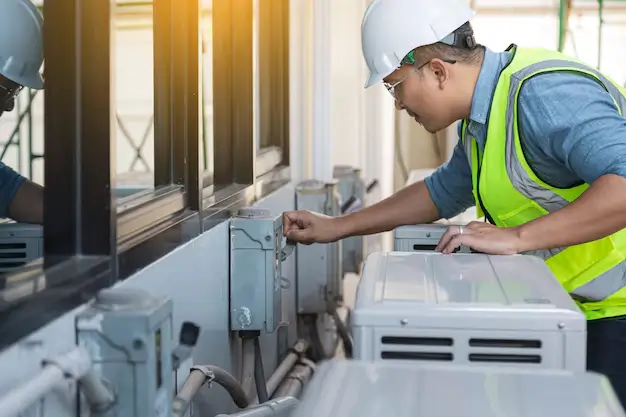Installing a PTAC unit in Brooklyn isn’t just about sliding it into the wall. These systems are common in apartments and commercial buildings because they handle both heating and cooling, but proper setup is key. Between building codes, electrical needs, and choosing the right size, there are a few important things to know before getting started. Working with a reliable company like New Cool Air can make the process smoother and ensure your unit runs efficiently for years. For anyone considering PTAC Installation in Brooklyn, it’s important to understand what makes this process different from other boroughs.
What is PTAC, and Why It’s Common in Brooklyn
A PTAC (Packaged Terminal Air Conditioner) is a self-contained heating and cooling unit usually installed through a wall. It’s popular in hotels, apartments, co-ops, older residential buildings, and institutions because of its relative simplicity and independent control over each room or space. PTACs offer the benefit of heating + cooling (depending on the model) without running ducts throughout the building.
Brooklyn, with its mix of older brick buildings, retrofits, and multi-unit dwellings, often uses PTACs or through-wall units when renovating or upgrading individual units. But installing one correctly requires more than just cutting a hole, sliding it in, and hooking up power. Choosing professionals who understand both PTAC installation NYC requirements and local building codes ensures a smooth process.
Key Considerations Before Installation in Brooklyn
Permits, Codes, and Building Approvals
- You’ll likely need a mechanical permit and/or an electrical permit. The New York City Department of Buildings (DOB) has rules governing installations that involve wall penetrations, power connections, and safety features.
- Make sure the installation meets NYC / NYS Energy Conservation Code requirements. PTAC units manufactured after January 2017 are subject to stricter energy‐efficiency rules and must comply with ASHRAE and other standards.
- Verify that any structural changes (e.g., cutting a new wall sleeve, reinforcing the wall) are acceptable under building code/landlord rules. Older buildings may need additional support.
Sizing and Electrical Requirements
- Select the correct size (BTU or capacity) for the room or space. Oversized units can waste energy; undersized units won’t cool/heat effectively.
- Ensure there’s a dedicated electric circuit, with proper voltage, breaker, wiring, and outlet. If not, electrical work may be needed.
Wall Sleeve and Structural Prep
- Measure carefully to match the wall opening to the PTAC sleeve. The sleeve supports and holds the unit. If the opening is off, you’ll have issues with security, insulation, and weather sealing.
- Clean out any debris, ensure the wall is structurally sound, and possibly waterproofed or insulated appropriately. Gaps around the sleeve should be sealed to prevent leaks and drafts.
Energy Efficiency & Environmental Impacts
- Units must comply with both federal and local efficiency/energy conservation codes. That includes efficiency metrics (EER, SEER, etc.) and possibly restrictions on refrigerants.
- Suppose your building is subject to Local Law 97 (for larger buildings). Inefficient PTACs might contribute to higher energy costs or even regulatory penalties.
Quality of Installation Matters
Even the best PTAC will underperform if installed poorly—misaligned sleeve, gaps, weak seal, improper tilt (for drainage), loose wiring, etc. Hiring a technician with experience in PTAC Installation in Brooklyn and familiarity with the borough’s unique building structures is crucial. Be sure they are licensed and insured.
Selecting a Provider
Compare providers with a good reputation, strong customer reviews, responsiveness, and warranties. Ask if they handle everything from prep to follow-through (sleeve fitting, electrical hookup, sealing, testing).
New Cool Air is one name in the region known for professional HVAC and PTAC services. If you consider them, check that they offer all needed services, including installation, maintenance, and PTAC repair Brooklyn to cover you long after the setup.
Common Challenges in Brooklyn
- Older Buildings : Walls are not built for new PTAC sleeves; brick cutting, reinforcement, and patching may be needed after removal/installation.
- Limited Access / Tight Spaces : Bulky units need lifts and staging, and sometimes, limited wall access is needed for venting or installing sleeves.
- Electrical Upgrades : Old wiring or inadequate circuits can fail or present safety risks.
- Weatherproofing / Insulation : Cold winters and humid summers mean that sealing around the unit and insulating the sleeve are vital to avoid energy loss and moisture problems.
These are challenges best handled by contractors who specialize in PTAC installation NYC projects and understand the balance between compliance and practicality.
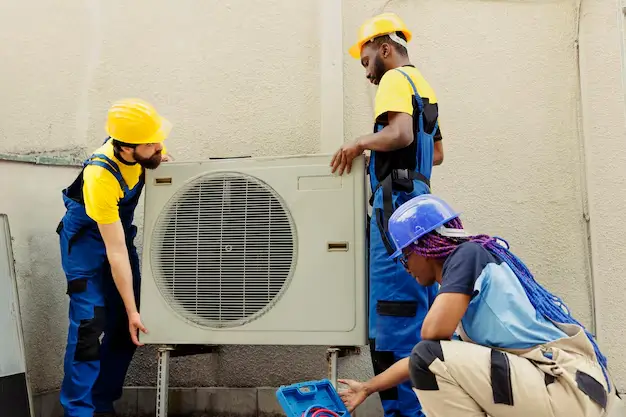
Post-Installation Care & Maintenance
Once your PTAC is installed:
- Clean or replace air filters regularly (monthly or bi-monthly depending on usage).
- Inspect condenser and evaporator coils annually to prevent dirt and dust buildup.
- Check that the thermostat and control panel are working properly.
- For units with heating, ensure coils and valves function well before winter.
- Schedule regular inspections with trusted providers who can also offer PTAC installation NYC when issues arise.
Benefits of Doing It Right
- Energy & Cost Savings: Properly sized, sealed, efficient units use less electricity.
- Comfort & Air Quality: Better airflow, consistent temperature, less dust/mold.
- Longevity: Good installation and upkeep mean longer lifespan and fewer breakdowns.
- Compliance & Safety: Meeting NYC codes avoids fines, hazards, and liability.
Frequently Asked Questions:-
Q1. What is a PTAC unit?
Ans : A PTAC is a self-contained system that provides both heating and cooling. It is often installed through a wall and is a common choice for PTAC installation NYC projects.
Q2. Why are PTACs common in Brooklyn buildings?
Ans : They’re ideal for apartments and older buildings where central HVAC isn’t practical, which is why many residents opt for PTAC Installation in Brooklyn.
Q3. Do I need permits for PTAC installation in Brooklyn?
Ans : Yes, installations often require building or electrical permits to meet NYC codes, and having approvals in place helps avoid problems during PTAC repair Brooklyn or upgrades later.
Q4. How do I know what size PTAC I need?
Ans : The right size depends on the room’s square footage and layout—an expert familiar with PTAC installation NYC can help with proper sizing.
Q5. Why should I hire a professional like New Coolair?
Ans : Professionals ensure safe, code-compliant installation and provide long-term support, including reliable PTAC Installation in Brooklyn and ongoing maintenance.
Final Thoughts
If you’re in Brooklyn and considering a PTAC system, take your time to plan—measure correctly, check codes, and choose the right provider. With professional support from companies like New Cool Air, PTAC Installation in Brooklyn becomes stress-free and reliable. The upfront effort will pay off in comfort, efficiency, and fewer headaches. Pairing a good installation with ongoing maintenance and access to trusted PTAC repair Brooklyn ensures your unit will serve you well through all seasons, whether you need cooling in the summer or heating in winter.


